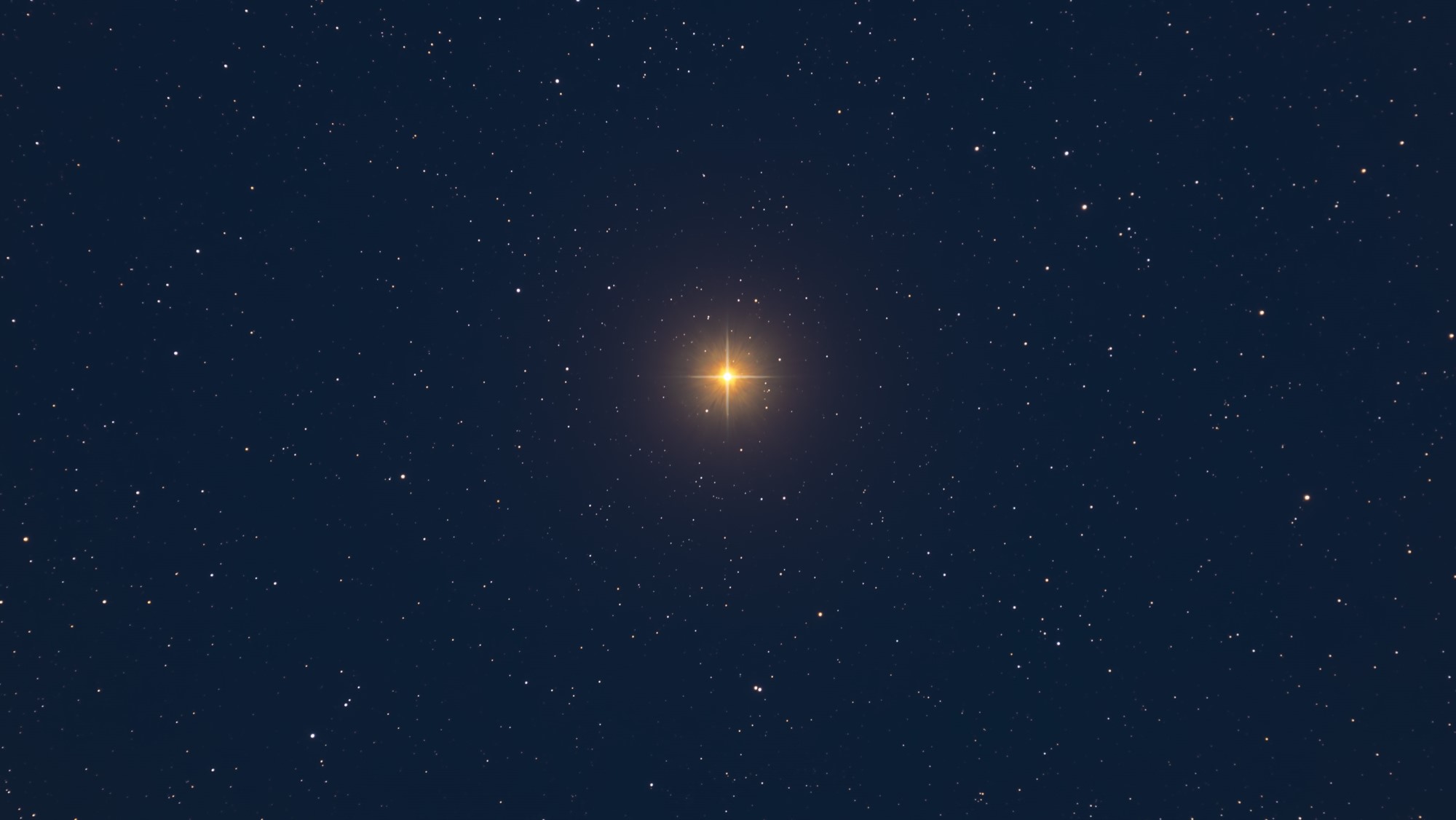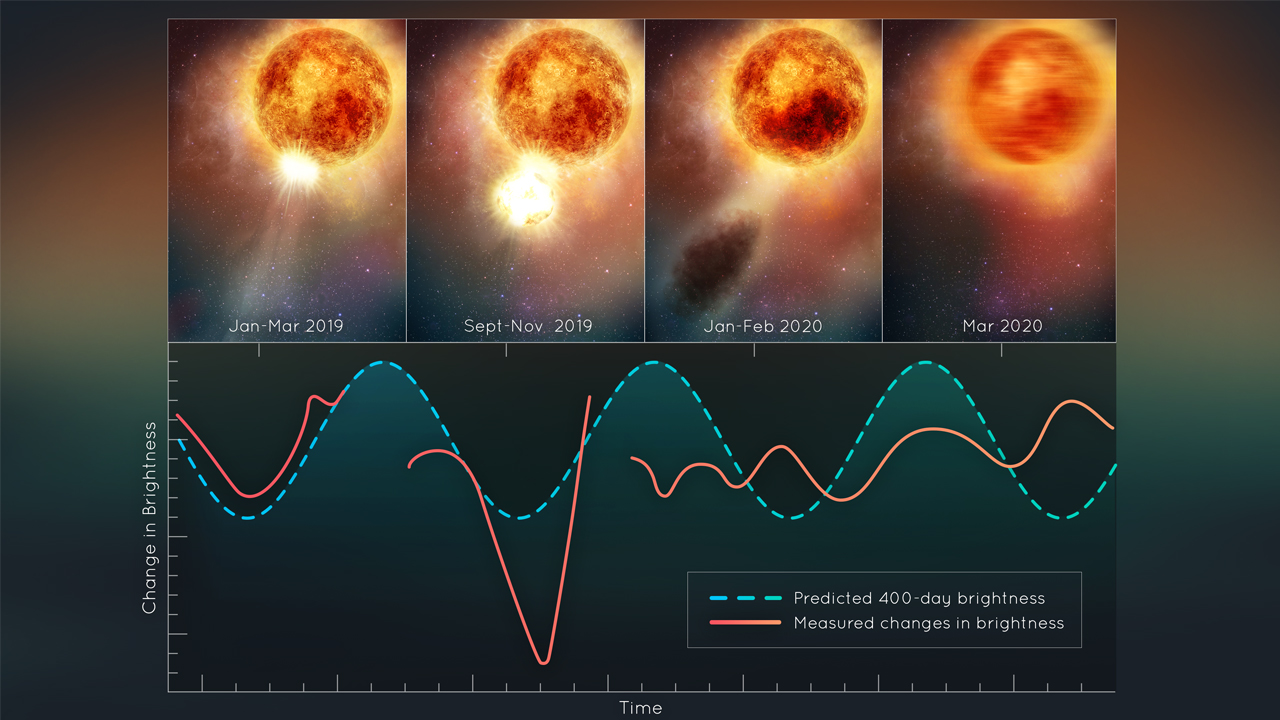Betelgeuse is bouncing back from bizarre dimming episode

Astronomers have long considered Betelgeuse a candidate for a long-overdue supernova within our galaxy. Yet the red supergiant now appears to be recovering following a mysterious and catastrophic 2019 event.
Sitting on the shoulder of the constellation Orion, Betelgeuse is one of the brightest stars in the sky. In early 2019, however, the massive star underwent a puzzling dimming event that was visible even to backyard observers. Scientists analyzing data from the Hubble Space Telescope and several other observatories now think Betelgeuse literally blew its top in 2019, and that the event is still affecting the star's behavior.
A detailed sequence of events put together from observations suggests the star suffered a gigantic surface mass ejection (SME) which blasted off a large chunk of the Betelgeuse's visible surface. The event was so enormous that it blew off 400 billion times as much mass as a typical coronal mass ejection (CME) experienced by our sun.
Related: Here's what the supergiant star Betelgeuse will look like when it goes supernova
Scientists think that a colossal cloud of obscuring dust formed in the wake of the SME, causing the dimming. The star is now recovering, but still feeling the consequences of the catastrophic event.
"Betelgeuse continues doing some very unusual things right now; the interior is sort of bouncing," Andrea Dupree, one of the authors of the paper and an astrophysicist at the Harvard-Smithsonian Center for Astrophysics, said in a statement.
The star's photosphere — the lowest section of a star's atmosphere and the layer visible to us — is rebuilding itself, according to observations. However, Betelgeuse's rhythmic, 400-day period of variation in its brightness has disappeared, although possibly temporarily. Astronomers have observed these regular brightness variations for almost 200 years to gauge changes in Betelgeuse.
Get the Space.com Newsletter
Breaking space news, the latest updates on rocket launches, skywatching events and more!
The Betelgeuse explosion may have been caused by a convective plume, more than a million miles (1.6 million kilometers) across, bubbling up from deep inside the star. The plume could have disrupted the regular convection cells that drove the previously regular pulsation.

The SME was an event on scale never before seen by astronomers, suggesting SMEs and CMEs are different types of events. The activity is also providing unprecedented insight into the life of supergiant stars.
Despite the excitement Betelgeuse stirred in 2019, the event is not seen as evidence that the star will go supernova anytime soon. If it does, however, Betelgeuse's demise will be visible from Earth even in the daytime.
To follow up, NASA's new James Webb Space Telescope could be used to detect infrared light from the ejected material as it moves away from Betelgeuse.
The paper has been accepted for publication in the Astrophysical Journal; a preprint version was posted to arXiv.org on Aug. 4.
Follow us on Twitter @Spacedotcom and on Facebook.
Join our Space Forums to keep talking space on the latest missions, night sky and more! And if you have a news tip, correction or comment, let us know at: community@space.com.

Andrew is a freelance space journalist with a focus on reporting on China's rapidly growing space sector. He began writing for Space.com in 2019 and writes for SpaceNews, IEEE Spectrum, National Geographic, Sky & Telescope, New Scientist and others. Andrew first caught the space bug when, as a youngster, he saw Voyager images of other worlds in our solar system for the first time. Away from space, Andrew enjoys trail running in the forests of Finland. You can follow him on Twitter @AJ_FI.









